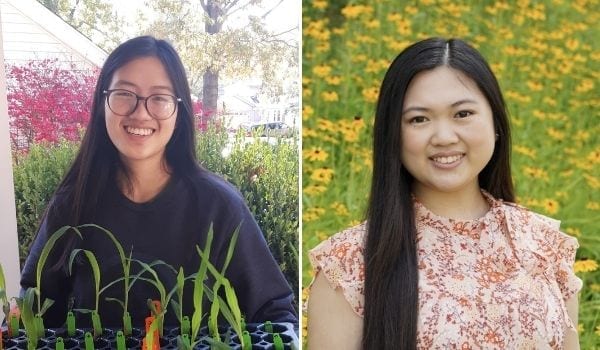Danforth STEAM Tales: Combining Plant Science with Art
Many people are familiar with the STEM abbreviation: Science, Technology, Engineering, and Mathematics. In our Education Research and Outreach Lab, scientists are focused on STEAM. STEAM adds “art” and design into the group of academic disciplines. By focusing on art and design in addition to STEM concepts, students learn that art and design play an essential role in science, from designing experiments to communicating their results to the general public.
The most recent STEAM-focused project to come out of the Education Research and Outreach Lab is called STEAM Tales. It is a project inspired by TinyRecorder, a Facebook page run by an entomologist in the British Isles that follows a tiny lego figurine as it explores nature and wildlife. The TinyRecorder Facebook page is regularly updated with photos of plants and insects, along with captions that identify the plants and insects.
“Like the TinyRecorder stories, STEAM Tales gives us a unique way to communicate to the public the science that is being done at the Danforth Center by weaving plant science projects into non-fiction story lines,” explains Kris Callis-Duehl, The Sally and Derick Driemeyer Director of Education Research and Outreach.

Danforth Plant Science Center High School Interns Kaitlyn Ying and Isabel Lee
Danforth Center high school interns Isabel Lee, a senior at Cor Jesu Academy, and Kaitlyn Ying, a senior at Parkway South High School, and Allison Blevins, undergraduate intern, made TinyRecorder-inspired stories for their Volvox, Genotype to Phenotype, and Mutant Millets projects.
Discovering Volvox Development STEAM Tale by Isabel Lee
“This project would be beneficial for high school students and undergraduates so they can learn more about the importance of communicating their research in a lay-friendly way, and the creativity that is needed to do that successfully,” says Sandra Arango-Caro, Education Researcher and Program Manager.
The project pushed Isabel and Kaitlyn to think outside of the box. “It was challenging for me because I think more logically than creatively, so I had to push myself to come up with an entertaining story,” says Isabel. “Captions were difficult to come up with because the content needed to be easy for all age groups to understand, but in the end, it was very rewarding to see how others could learn about science in a fun way. My favorite part was deciding how to position and change the expressions of my Lego character in order to best tell the story.”
“I realized that any scientific process can be told like a story,” says Kaitlyn. “Different structures or organisms can be characters, and there is always an element of mystery or discovery.”
Genotype to Phenotype STEAM Tale by Kaitlyn Ying.